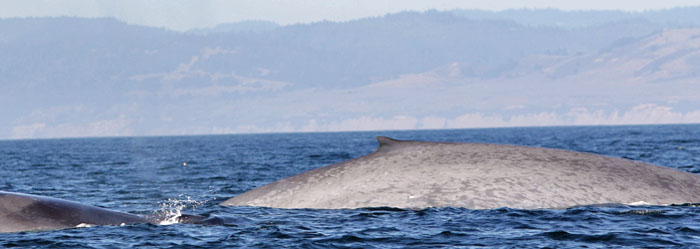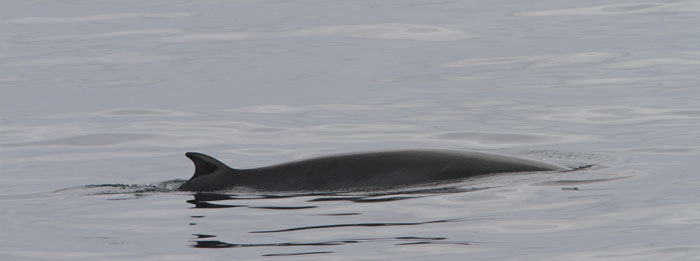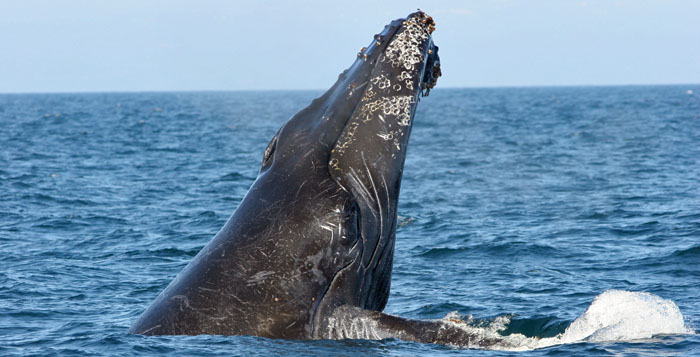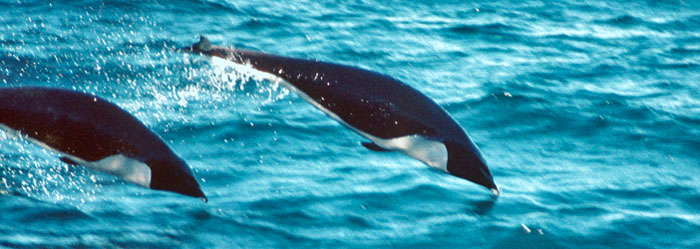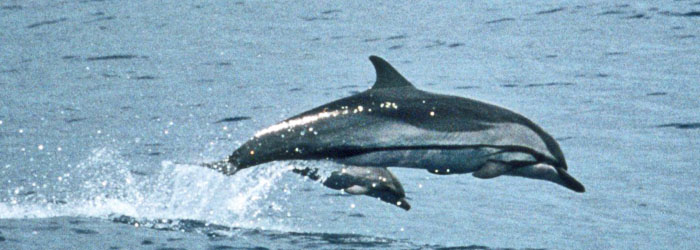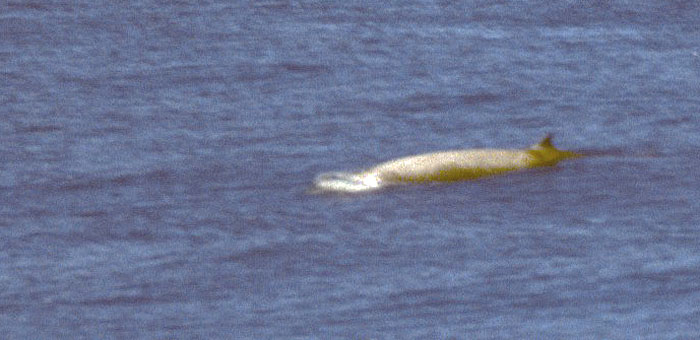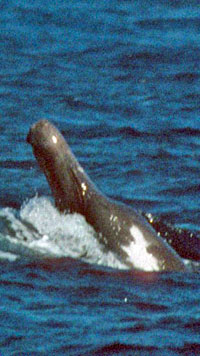a web page by Don Roberson |
MAMMALS
Families & Subfamilies of the World
page seven — Cetaceans
#
|
FAMILY [Subfamily] |
Photo |
date/site |
||||
1 |
BALAENIDAE Right & Bowhead Whales |
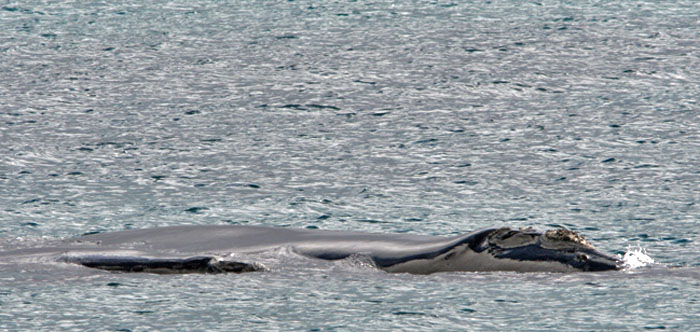 |
Southern Cheyne Bay, mother with small calf |
||||
2 |
BALAENOPTERIDAE three examples |
|
Blue Monterey Bay, 2 large adults, possibly a pair; Blue is the largest rorqual
Common North Atlantic,
Humpback Monterey Bay, featuring a breaching adult
Humpback a particularly Monterey Bay,
|
||||
3 |
ESCHRICHTIIDAE |
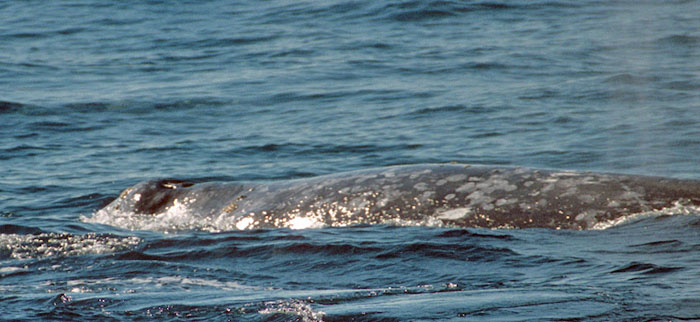 |
Gray Monterey Bay,
|
||||
4 |
DELPHINIDAE four examples |
|
Pacific White-sided Dolphin Lagenorhynchus obliquidens Monterey Bay, full body leap
Northern Right-whale Dolphin Lissodelphis borealis Monterey Bay,
Striped Eastern Tropical
Orca Monterey Bay, adult male (huge fin) with female and calf
|
||||
5 |
MONODONTIDAE |
 |
Beluga just off Churchill, Manitoba, Canada |
||||
6 |
PHOCOENIDAE |
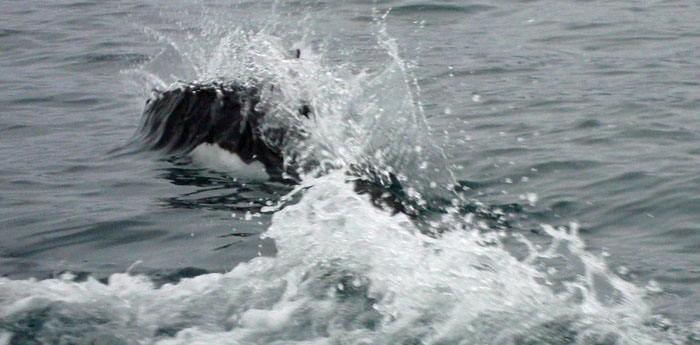 |
Dall's Porpoise Kenai Fjords NP, Alaska, USA |
||||
9 |
PHYSETERIDAE Sperm Whale |
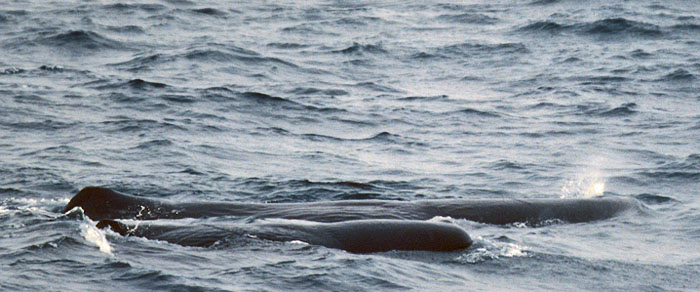 |
Sperm Whale adult male and (possibly) female Eastern Tropical Pacific ~ 3°S, 83°W |
||||
10 |
KOGIIDAE Pygmy & Dwarf Sperm Whales |
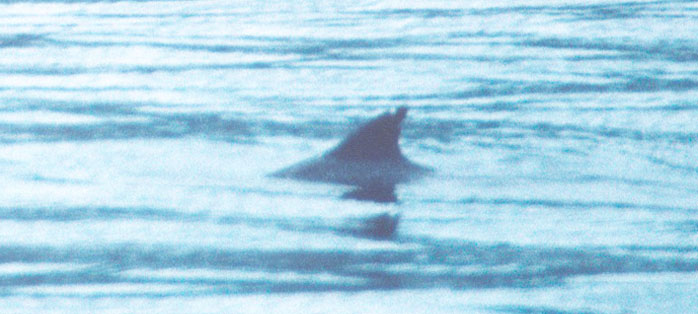 |
Dwarf Sperm Whale off Dominica in the Caribbean |
||||
11 |
INIIDAE |
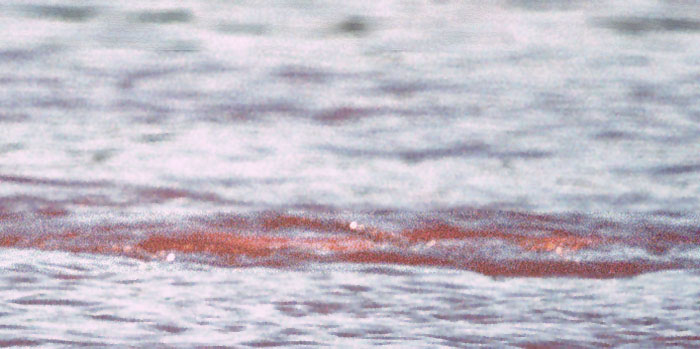 |
Bota (Pink River Dolphin) Amazon R., nr Leticia, Colombia In those pre-digital days, I only managed a photo of the backs of two Bota |
||||
12 |
ZIPHIIDAE two examples |
|
Cuvier's Beaked Whale adult male Eastern Tropical Pacific ~ 9°N, 87°W
Baird's Monterey Bay, California, USA two shots: pod at surface & a head exposed
|
ADDENDUM — some thoughts about this project This project presents photos of mammals I've observed, organized by family, subfamily, or tribe. The mammal families I've encountered but not yet photographed include: Ornithoryhynchidae [Platypus], Didelphidae [Opossums], Dasyuridae [Carniverous Marsupials], Pseudocheiridae [Ringtail Possums & Greater Gliders], Petauridae [Striped Possum & Lesser Gliders], Hypsiprymnodontidae [Rat Kangaroo], Macroscelididae [Sengis], Dasypodidae [Long-nosed Armadillos], Cynocephalidae [Colugos], Cheirogaleidae [Mouse-Lemurs & relates], Gliridae [Dormice], Pedetidae [Spring-hares], Echimyidae [Bamboo Rats], Echimyidae [Hutias, Coypu, & Spiny-rats], Erinaceidae [Gymnures], Rhinolophidae [Horseshoe Bats], Hipposideridae [Old World Leaf-nosed Bats], Mormoopidae [Mustached Bats], and Miniopteridae [Long-fingered Bats], plus some fine subfamilies (e.g., Protelinae [Aardwolf] among the Hyaenidae). |
| TO MAMMAL FAMILIES 3: Rodents |
| TO MAMMAL FAMILIES 6: Hogs to Antelopes |
| Taxonomy — based primarily on Jon Hall's "Mammal-Watching" checklist (2020) used by Scythebill |
CREDITS — see some credits in the box above; all photos & text are © Don Roberson except as otherwise indicated |
